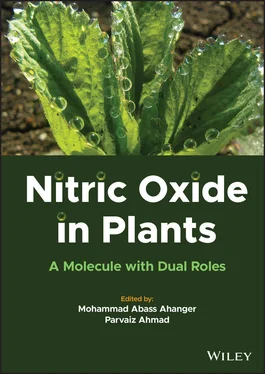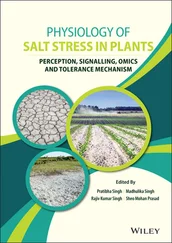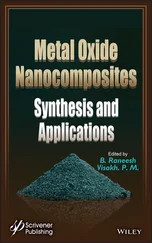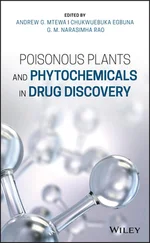Nitric Oxide in Plants
Здесь есть возможность читать онлайн «Nitric Oxide in Plants» — ознакомительный отрывок электронной книги совершенно бесплатно, а после прочтения отрывка купить полную версию. В некоторых случаях можно слушать аудио, скачать через торрент в формате fb2 и присутствует краткое содержание. Жанр: unrecognised, на английском языке. Описание произведения, (предисловие) а так же отзывы посетителей доступны на портале библиотеки ЛибКат.
- Название:Nitric Oxide in Plants
- Автор:
- Жанр:
- Год:неизвестен
- ISBN:нет данных
- Рейтинг книги:5 / 5. Голосов: 1
-
Избранное:Добавить в избранное
- Отзывы:
-
Ваша оценка:
- 100
- 1
- 2
- 3
- 4
- 5
Nitric Oxide in Plants: краткое содержание, описание и аннотация
Предлагаем к чтению аннотацию, описание, краткое содержание или предисловие (зависит от того, что написал сам автор книги «Nitric Oxide in Plants»). Если вы не нашли необходимую информацию о книге — напишите в комментариях, мы постараемся отыскать её.
Examines the beneficial roles of nitric oxide in growth and stress tolerance regulation through its involvement in tolerance mechanisms Nitric Oxide in Plants: A Molecule with Dual Roles
Nitric Oxide in Plants: A Molecule with Dual Roles
Nitric Oxide in Plants — читать онлайн ознакомительный отрывок
Ниже представлен текст книги, разбитый по страницам. Система сохранения места последней прочитанной страницы, позволяет с удобством читать онлайн бесплатно книгу «Nitric Oxide in Plants», без необходимости каждый раз заново искать на чём Вы остановились. Поставьте закладку, и сможете в любой момент перейти на страницу, на которой закончили чтение.
Интервал:
Закладка:
151 Wei, L., Zhang, J., Wang, C. et al. (2020). Recent progress in the knowledge on the alleviating effect of nitric oxide on heavy metal stress in plants. Plant Physiology and Biochemistry 147: 161–171. doi: 10.1016/j.plaphy.2019.12.021.
152 Wendehenne, D., Pugin, A., Klessig, D. et al. (2001). Nitric oxide: comparative synthesis and signaling in animal and plant cells. Trends in Plant Science 6: 177–183.
153 Wu, A.P., Gong, L., Chen, X. et al. (2014). Interactions between nitric oxide, gibberellic acid, and phosphorus regulate primary root growth in Arabidopsis. Plant Biology 58: 335–340.
154 Xu, J., Wang, W., Yin, H. et al. (2010). Exogenous nitric oxide improves antioxidative capacity and reduces auxin degradation in roots of Medicago truncatula seedlings under cadmium stress. Plant Soil 32: 321–330.
155 Yamasaki, H., Shimoji, H., Ohshiro, Y. et al. (2001). Inhibitory effects of nitric oxide on oxidative phosphorylation in plant mitochondria. Nitric Oxide – Biology and Chemistry 5: 261–270.
156 Yuan, H.M. and Huang, X. (2016). Inhibition of root meristem growth by cadmium involves nitric oxide-mediated repression of auxin accumulation and signalling in Arabidopsis. Plant Cell and Environment 39: 120–135.
157 Yuanjie, D., Wei-Feng, C., Xiaoying, B. et al. (2019). Effects of exogenous nitric oxide and 24-epibrassinolide on physiological characteristics of peanut under cadmium stress. Pedosphere 29: 45–59. doi: 10.1016/S1002-0160(17)60376.
158 Zafra, A., Rodríguez-García, M.I., and Alché, J.D. (2010). Cellular localization of ROS and NO in olive reproductive tissues during flower development. BMC Plant Biology 10: 36–53.
159 Zago, E., Morsa, S., Dat, J.F. et al. (2006). Nitric oxide and hydrogen peroxide responsive gene regulation during cell death induction in tobacco. Plant Physiology 141: 40411.
160 Zeier, J., Delledonne, M., Mishina, T. et al. (2004). Genetic elucidation of nitric oxide signaling in incompatible plant–pathogen interactions. Plant Physiology 136: 2875–2886.
161 Zhang, Y., Wang, L., Liu, Y. et al. (2006). Nitric oxide enhances salt tolerance in maize seedlings through increasing activities of proton-pump and Na+/H+ antiport in the tonoplast. Planta 224: 545–555.
162 Zhao, J., Fujita, K., and Sakai, K. (2005). Oxidative stress in plant cell culture: a role in production of beta-thujaplicin by Cupressus lusitanica cultures. Biotechnology and Bioengineering 90: 621.
163 Zhao, L., Chen, L., Gu, P. et al. (2019). Exogenous application of melatonin improves plant resistance to virus infection. Plant Pathology. 68: 1287–1296. doi: 10.1111/ppa.13057.
164 Zhao, Z., Chen, G., and Zhang, C. (2001). Interaction between reactive oxygen species and nitric oxide in drought-induced abscisic acid synthesis in root tips of wheat seedlings. Australian Journal of Plant Physiology 28: 1055–1061.
165 Zhao, Z., Zhang, F., Guo, J. et al. (2004). Nitric oxide functions as a signal in salt resistance in the calluses from two ecotypes of reed. Plant Physiology 134: 849–857.
166 Zou, L.J., Deng, X.G., Zhang, L.E. et al. (2018). Nitric oxide as a signaling molecule in brassinosteroid mediated virus resistance to Cucumber mosaic virus in Arabidopsis thaliana. Physiologia Plantarum 163: 196–210.
2 Regulation of NO Biosynthesis Under Abiotic Stresses and Modulation Due to Osmolytes
Kaneez Fatima1, Fozia Sardar2, and Asma Imran2
1Department of Life Sciences, University of Management and Technology (UMT), Lahore, Pakistan
2National Institute for Biotechnology and Genetic Engineering-Campus-Pakistan Institute of Engineering and Applied Sciences (NIBGE-C-PIEAS), Faisalabad, Pakistan
2.1 Introduction
Nitrogen monoxide/nitric oxide (NO) is a small, fat-soluble gaseous radical that has been well recognized for a long period to be involved in the nitrogen cycle (Jedelská et al. 2021). Earlier it was considered a gaseous free radical and toxic air pollutant (Gupta et al. 2011; Astier et al. 2018). However, over the past 30 years, NO has turned out to be the center of many biological processes in animals and plants as it has been reported as a signaling molecule. This has shifted research interest and understanding of NO as a noxious by-product to it being seen as an important molecule. NO has multiple functions at diverse levels including chemical, cellular, organ, and tissue (Santolini et al. 2017; Corpas et al. 2019; Vishwakarma et al. 2019). In animals, NO acts as a vital regulator and plays an important role in reproduction; while, in plants, it is involved in various functional developments, for instance, germination, seed dormancy (Probert 2000; Bethke et al. 2006; Arc et al. 2013; Nagel et al. 2019), defense responses, flowering/leaf senescence, and protection against environmental stresses (Lora et al. 2019; Abedi et al. 2021).
Nitric oxide is available as three exchangeable species: the cation of nitrosonium (NO +), NO, and the anion of nitroxyl (NO −) (Butler et al. 1995). It is water soluble and by the addition of ferrous salts, its solubility is enhanced. Therefore, it can easily diffuse in the aqueous part of a cell including the cytoplasm, and also can freely move through the lipid bilayer. It is believed that once it is produced, it can move to the adjacent cells (Del Río et al. 2004; Delledonne 2005).
2.2 Biosynthesis of NO
There are numerous prospective sources of nitric oxide in plants (Figure 2.1) and its production is highly dependent on the type of plant, tissues/cells, plant growth environment, and stimulation of the signaling pathway under specific conditions (González-Moscoso et al. 2021). It is believed that the synthesis of NO can be achieved via two major routes: nitrate reductase and the oxidative pathway (Bethke et al. 2004; Besson-Bard et al. 2008). These are discussed in Sections 2.2.1 and 2.2.2.
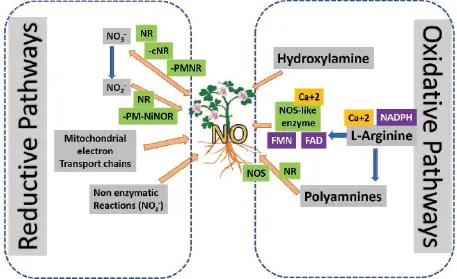
Figure 2.1 Biosynthesis pathways of nitric oxide in plants.
2.2.1 Nitrate Reductase
In higher plants, nitrate reductase (NR, EC 1.7.1.1) is a cytosolic enzyme that facilitates the assimilation and metabolism of nitrogen (Ahmad et al. 2021). This enzyme utilizes nicotinamide adenine dinucleotide (NADH) (electron donor), molybdopterin, and heme/flavin adenine dinucleotide (FAD) (cofactors) to activate the reduction of nitrate into nitrite (Kaya et al. 2020b).Nitrate reductase is generally present as a homodimer in tetrameric form, depending upon the plant species. In addition to its primary role, nitrate reductase is involved in the production of nitrite: its activity level is quite low and makes up 1% of total nitrate-reducing ability (Mohn et al. 2019).
As well as cytoplasmic-based nitrate reductase, membrane-associated nitrite – NO reductase (Ni-NOR) – is also involved in NO production in plants. It is exclusively present in rhizome, which utilizes NAD(P)H (electron donor) to yield the NO from nitrite. It works at low oxygen pressure and in conjunction with membrane-linked nitrate reductase, which produces nitrite from nitrate. In their structural features, both cytoplasmic and membrane-bound reductase enzymes exhibit the presence of a cofactor named molybdenum (Moco) (Chamizo-Ampudia et al. 2017; Gao et al. 2019). In plants, some other Moco-containing enzymes exist, including (i) aldehyde oxidases (AOs), (ii) sulfite oxidases (SOs), and (iii) xanthine oxidases (XOs), all of which produce NO from nitrite (Bethke et al. 2004).
2.2.2 Mechanisms of Oxidative NO Synthesis
As plants can survive and grow without nitrite and nitrate, they should have nitrite-independent, oxidative mechanisms for NO synthesis. Indeed, analogous to animal nitric oxide synthase (NOS) (EC 1.14.13.39), the plant enzyme is not dependent on nitrite and is involved in the deamination of L-arginine into L-citrulline and NO via NADPH and O 2and necessitating Ca 2+/calmodulin (Rőszer 2012). Enzymatic oxidation has been witnessed in the peroxisomes (leaf), chloroplasts of the tracheophytes, and in green algae. In chloroplasts, the oxidation of L-arginine to NO requires NADPH and is independent of Ca 2+availability. While in the leaf peroxisomes, the conversion of L-arginine/L-citrulline requires Ca 2+/calmodulin, flavin mononucleotide (FMN), FAD, and NADPH (Mur et al. 2013).
Читать дальшеИнтервал:
Закладка:
Похожие книги на «Nitric Oxide in Plants»
Представляем Вашему вниманию похожие книги на «Nitric Oxide in Plants» списком для выбора. Мы отобрали схожую по названию и смыслу литературу в надежде предоставить читателям больше вариантов отыскать новые, интересные, ещё непрочитанные произведения.
Обсуждение, отзывы о книге «Nitric Oxide in Plants» и просто собственные мнения читателей. Оставьте ваши комментарии, напишите, что Вы думаете о произведении, его смысле или главных героях. Укажите что конкретно понравилось, а что нет, и почему Вы так считаете.
